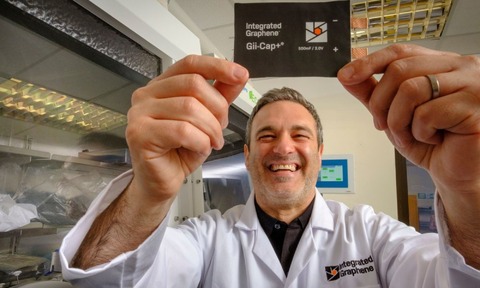Bath says graphene research offers industrial disinfectant breakthrough
13 Jun 2023

Researchers at the University of Bath say they have developed a new graphene based process that can scale up electrolytic hydrogen peroxide yields and offer a more sustainable approach for industry.
Hydrogen peroxide is essential for a variety of disinfection and chemical processes, releasing chemical energy that breaks down pollutants.
However more than 95% is produced through the anthraquinone process, which can involve use of harmful chemicals. The electrolytic process alternative is more sustainable but its combination of high energy consumption and low yields have traditionally been a deterrent to use.
But the Bath research published in Electrochemistry Communications, claims that by using Gii-based electrodes – developed by Integrated Graphene, with the addition of a microporous polymer (PIM-1) to aid the catalytic surface process – quadruples the rate of production.
Described as “a pure sponge-like carbon 3D scaffold (Gii™) that has all the desired properties of graphene yet does not suffer any of its scale-up issues” Gii has potential applications for multiple industries including biosensors, internet of things (IOT), energy storage, pressure and gas sensors, says the company.
Integrated Graphene’s Co-Founder and CSO, Dr Marco Caffio (pictured), commented: “Alongside a growing global demand for hydrogen peroxide, there is a clear requirement by industry for a more sustainable means of production. Combining our Gii™ technology with PIM-1 is a giant leap forward in developing an alternative process which is greener and more effective than current methods.”
Profesor Frank Marken of Bath’s Department of Chemistry added that the next step would be combining simultaneous anode and cathode processes, with both producing hydrogen peroxide to achieve even higher efficiency.

